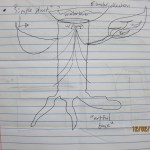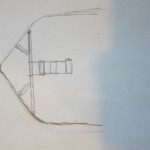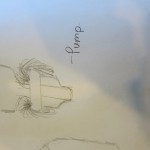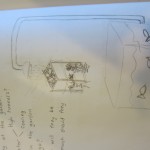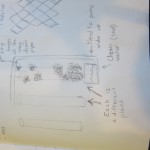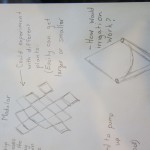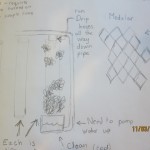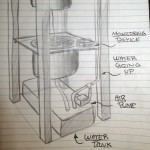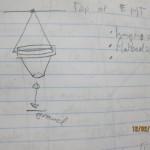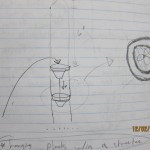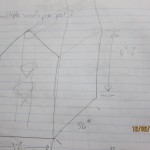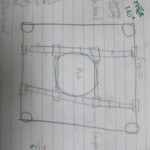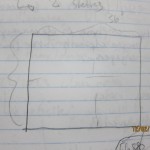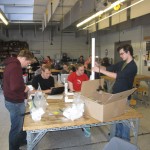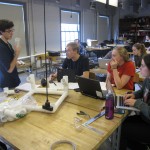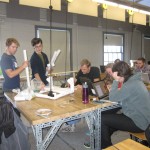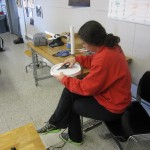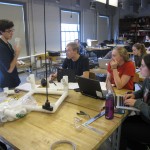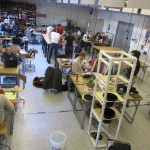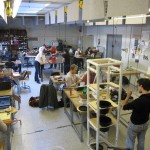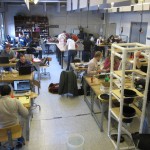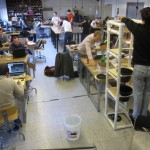The actual design of our system is very simple; most hydroponic systems are built in either one of two fashions — vertically, or in a flat flood-bed. The vertical systems allow for a single stream of water to flow along the plant-line, from container to container, rather than trying to feed each plant individually at a time — thus conserving pump-power and flow. The advantage to the flood-bed is the ability to feed all the desired plants at once, by flooding the entire plant-bed at once, then allowing the system to drain fully before filling again; however, this does require more open space to implement, and is more prone to issues of mold and requires more power (and a stronger pump to implement), which is why we chose to go with out current design of a vertical-drip system: if we start at the bottom where the nutrient solution is pumped from the reservoir up to the top of the structure (through the sides of the structure to save space and reduce clutter), where it flows through the first plant-container into the second via ropes — a drip-system, to avoid the solution spraying out of the bottom and onto the tops of the plants, as with this method the solution can be assured to flow directly from the soil of one pot to another. At the bottom of the vertical stack we have a funnel that leads back to our reservoir, to allow for a fully closed-loop system. It should be noted here that our project uses a kelp-based nutrient solution that is non-toxic to humans, so if skin contact occurs no health-issues should arise. Combined with the sensor-array included in our system (See: Monitoring Unit) to monitor and control the flow cycle and conditions of the system, we are secure that our system will deliver efficient produce with minimal input from the student users, thus easing the burden of growing from the Community Gardens.
